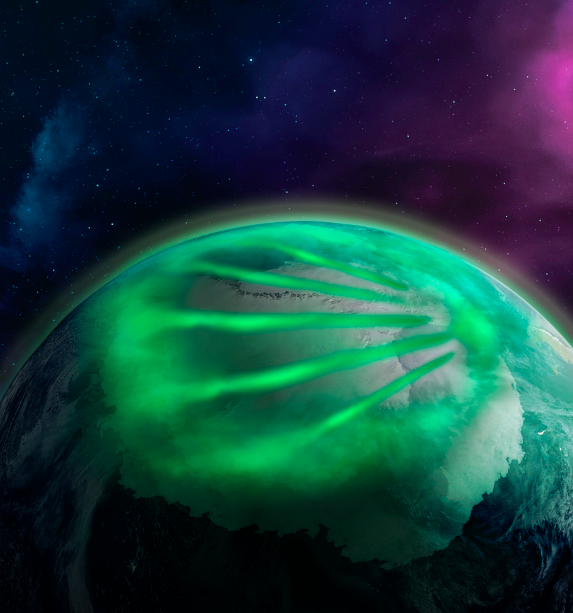The beautiful aurora lightning up a dark sky may appear in many different forms, reflecting the state of the interplay between the solar wind, the magnetopshere and the Earth’s ionosphere. One such auroral form is known as a transpolar auroral arc (TPA), appearing in the extremely high-latitude ionosphere of the Earth when the interplanetary magnetic field (IMF) is northward. TPAs can appear as a single or multiple arcs, and they stretch almost entirely across the polar cap, connecting the dayside and nightside auroral oval.
Studies of TPAs are most important, as the formation and evolution of TPAs offers clues about processes transferring energy and momentum from the solar wind to the magnetosphere and ionosphere (during northward IMF). However, the formation mechanisms of TPAs have so far remained poorly understood, partly because of a lack of simultaneous observations at multiple points across the solar wind – magnetosphere – ionosphere system.
I a new study in the prestigious journal PNAS by Zhang et al. [2020] entitled “Multiple transpolar auroral arcs reveal insight about coupling processes in the Earth’s magnetotail“, ground-breaking multiple-instrument observations of multiple TPAs are presented. The auroral structures are seen simultaneously both in the ionosphere and the distant magnetotail, and the observations are interpreted using a global three-dimensional (3D) magnetohydrodynamic (MHD) simulation.
Professor Kjellmar Oksavik at BCSS is one of the co-authors of this study, that is a direct result of him going to China during the spring of 2018 as part of his academic sabbatical year: “In short, this study provides new insight into the coupling processes in our near Earth space during northward IMF conditions”, Oksavik says.
Pictured below (from Zhang et al., 2020) is the schematic of bright multiple TPAs across the Earth’s southern polar ionosphere. About the formation of these TPAs, Oksavik explains: “We believe they are produced by plasma flow shears and electrical currents along the Earth’s magnetic field, arising from the drag of the supersonic plasma flow carried by the solar wind on the magnetosphere, under a northward IMF”.

Image courtesy of Qing-He Zhang, Shandong University, China.
Professor Oksavik also stresses the importance of being able to have simultaneous measurements in both the ionosphere, the solar wind and far out in the distant magnetotail. The latter was made possible thanks to the ARTEMIS satellites. As explained in this article on the NASA webpage, the five THEMIS satellites were launched in 2007 to study the origin of substorms. However, in 2010, two of the satellites were repurposed as ARTEMIS to study the Moon’s interactions with the Sun. “By studying the aurora during times when the Moon and ARTEMIS were on the nightside of the Earth, we managed to identify time periods with measurements from the distant magnetotail coinciding with multiple transpolar auroral arcs. That made us aware of multiple flow shear sheets far out in a region not well known due to few satellites passing by. When the MHD model revealed that the multiple flow shear sheets were related to multiple transpolar auroral arcs, we realized the importance of this ground-breaking study”, Oksavik says.




